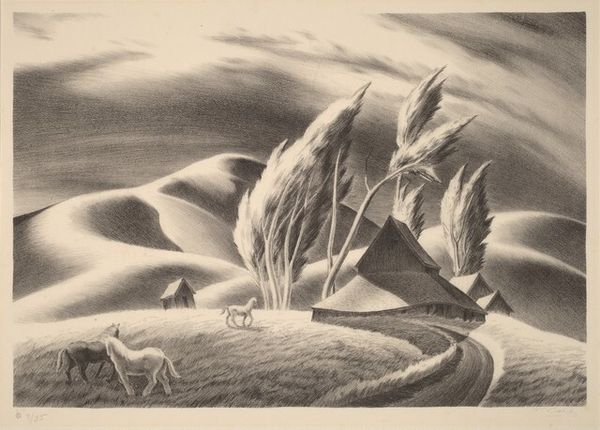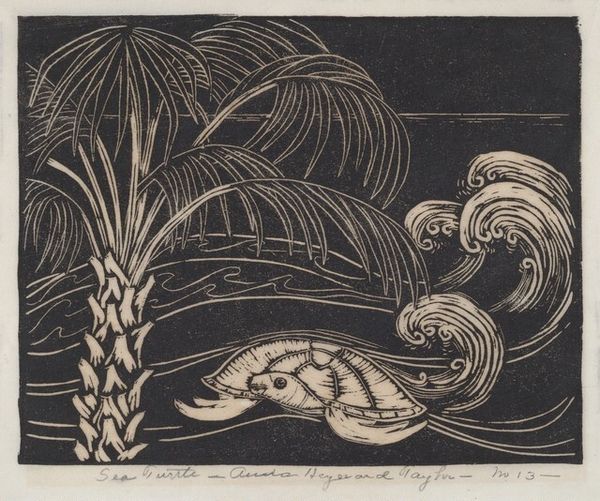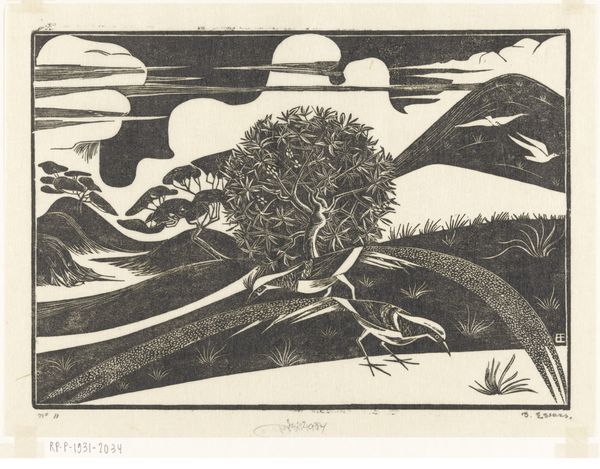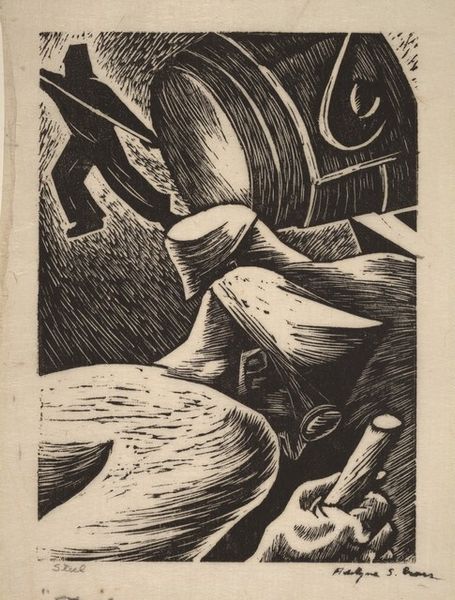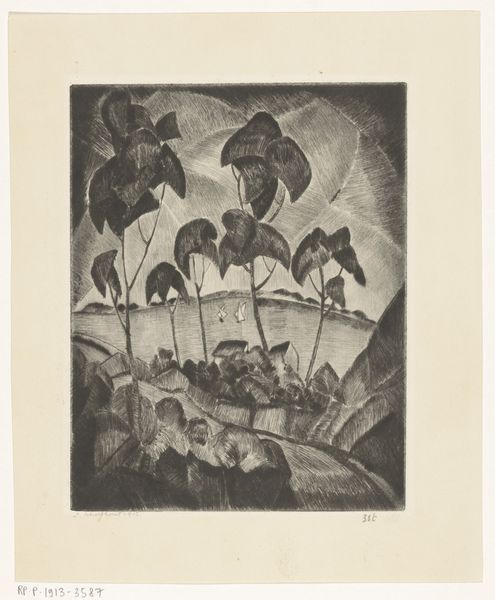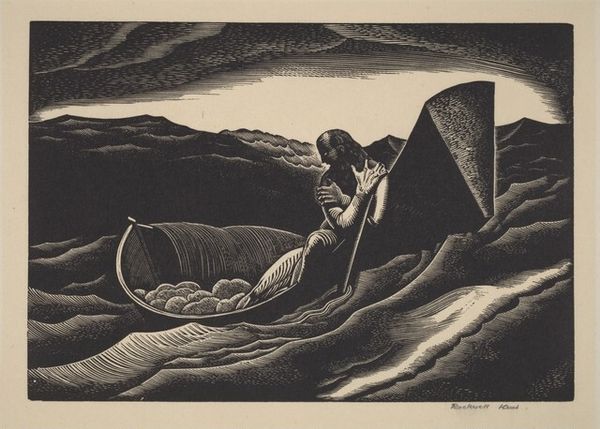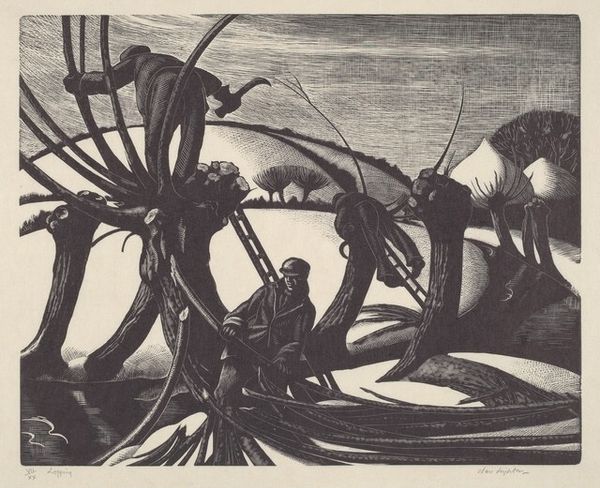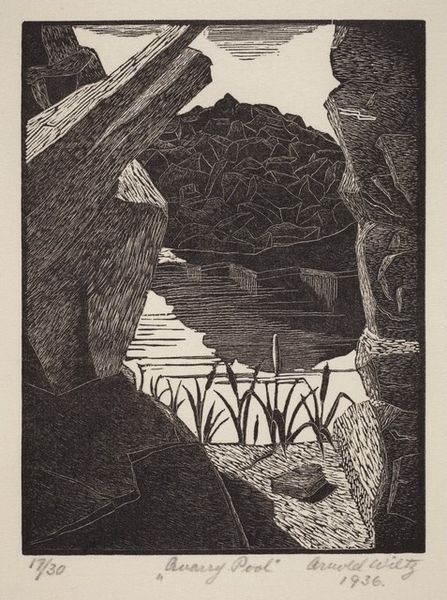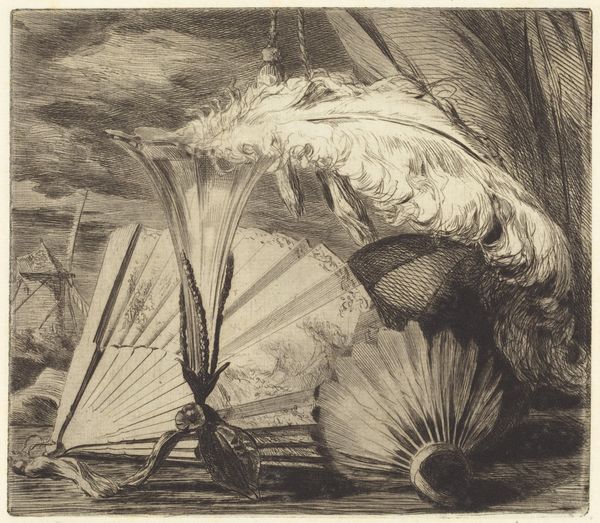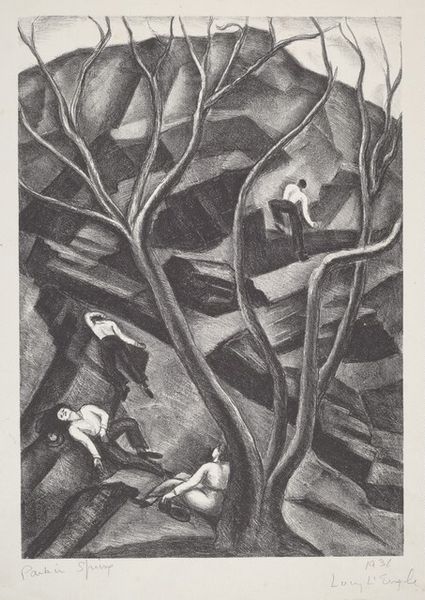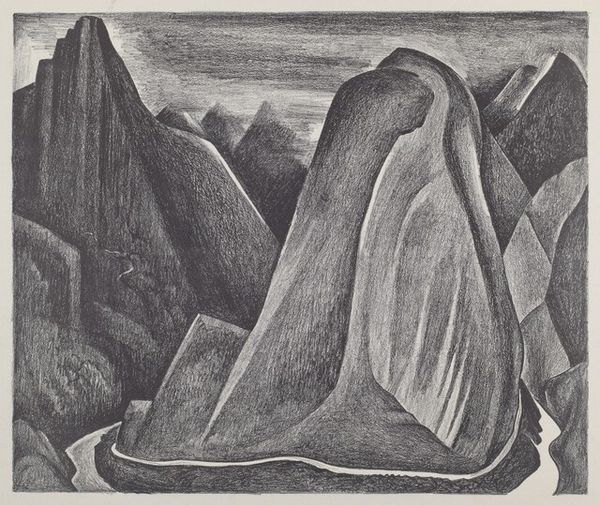
print, etching
# print
#
etching
#
landscape
#
caricature
#
realism
#
monochrome
Dimensions: plate: 225 x 277 mm sheet: 290 x 338 mm
Copyright: National Gallery of Art: CC0 1.0
Editor: Let's consider George Joseph Mess’s "Lullaby of the Leaves", a landscape etching dating back to 1945. There's a certain starkness to the composition. How does this realism intersect with the socio-political climate of that time? Curator: That’s a keen observation. Consider the end of World War II. While ostensibly a landscape, its somber tones resonate with the post-war atmosphere. This landscape, in its monochrome and meticulous detail, arguably serves as a form of social commentary. The 'lullaby' isn't necessarily gentle; what societal 'sleep' do you think it suggests? Editor: Perhaps a turning away from the realities of war and global upheaval? The almost overwhelming size of the leaves feels like an attempt to smother the landscape beyond. Is there an element of institutional reflection here as well? Curator: Precisely. Mess created this work during a time when institutions like museums and galleries were grappling with their role in a world forever changed. The accessibility of printmaking made art available beyond elite circles, engaging a broader public. How do you see the choice of printmaking as a political statement, if at all? Editor: Perhaps as a democratic gesture? Creating art for the masses, disrupting the notion of art as solely for the wealthy elite? Curator: Exactly. "Lullaby of the Leaves", then, transcends simple landscape. It mirrors the social anxieties of its era, subtly challenging institutional norms through accessible artistry. Editor: That definitely enriches my understanding. Seeing it as less of a passive scene and more as an active participant in a cultural moment shifts everything. Curator: Agreed. By situating this landscape within its historical context, its power and significance becomes far more pronounced.
Comments
No comments
Be the first to comment and join the conversation on the ultimate creative platform.
